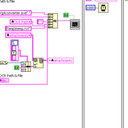[Study on the mechanism of akebia saponin D for leukemia].
Keywords
Abstract
OBJECTIVE
To investigate the mechanism of akebia saponin D (ASD) for fight against leukemia cells.
METHODS
The human acute leukemia cell strain U937 and human acute promyelocytic leukemia cell strain HL-60 were treated with ASD at different doses (10, 30, 50, and 100 microg/mL). The proliferation inhibition of ASD was observed using MTT assay. Apoptosis was detected by Annexin-V staining. The expressions of correlated genes were detected by PCR. Changes of p53 were detected using Western blot. The nitrite content, as the metabolite of nitric oxide (NO) was detected by Griess spectrophotometry.
RESULTS
50 microg/mL ASD could obviously inhibit the growth of U937 and HL-60 cells in a dose-dependent manner, accompanied with the down-regulation of bcl-2 mRNA expression. Results of Western blot showed that the P53 expression increased along with the dose of ASD. Besides, ASD could elevate the content of NO in U937 and HL-60 cells (P < 0.05).
CONCLUSIONS
ASD could inhibit the proliferation and induce the apoptosis of U937 and HL-60 cells. The mechanism might be correlated with down-regulating the bcl-2 expression, up-regulating the p53 expression, and increasing the NO content in U937 and HL-60 cells.




